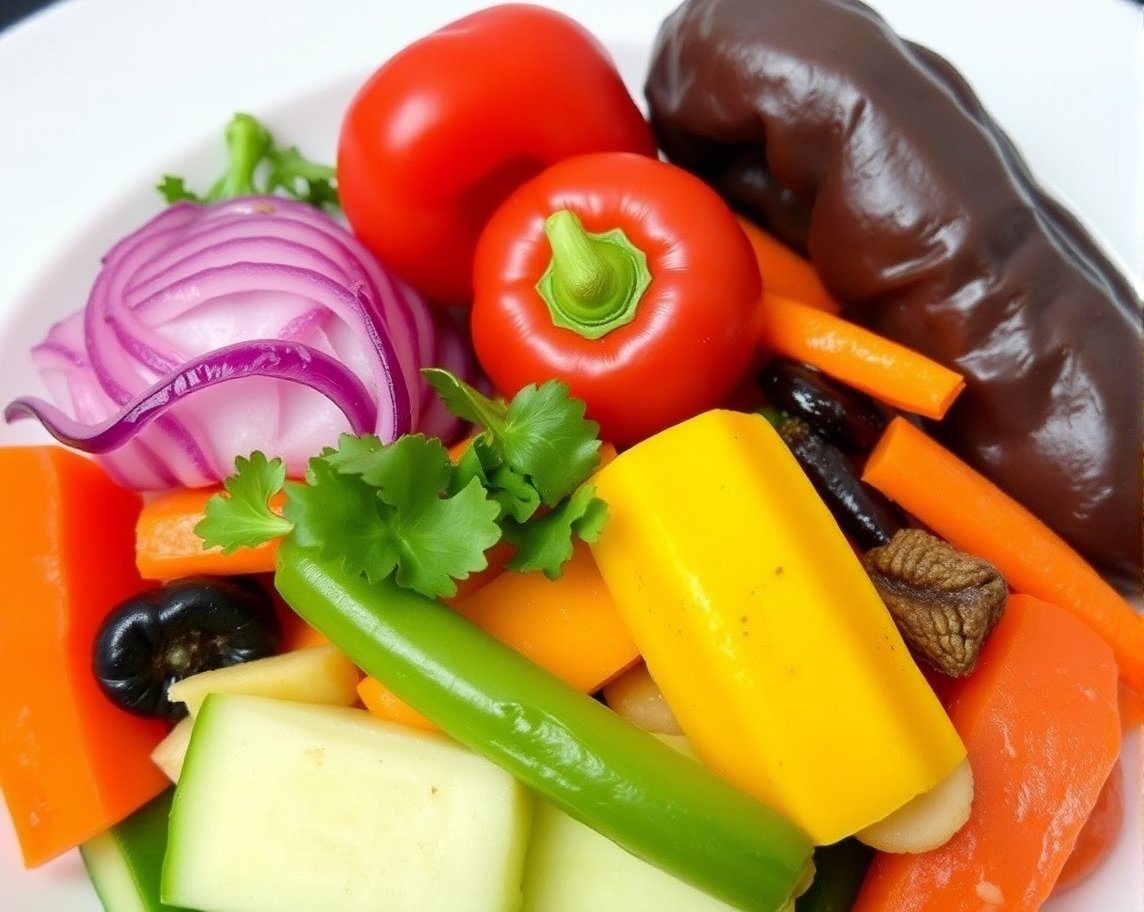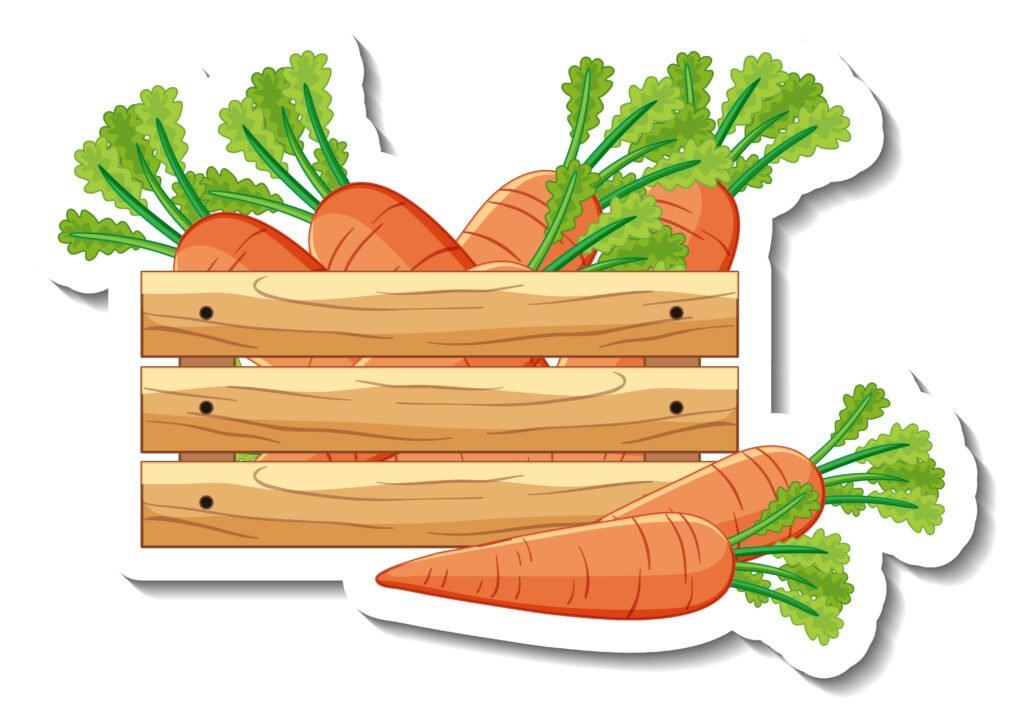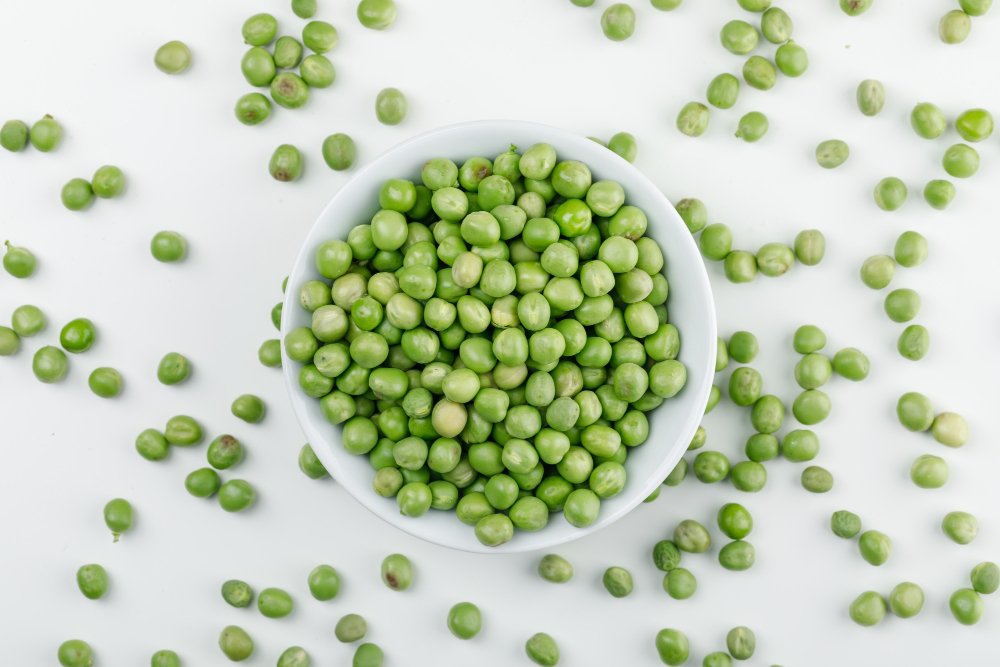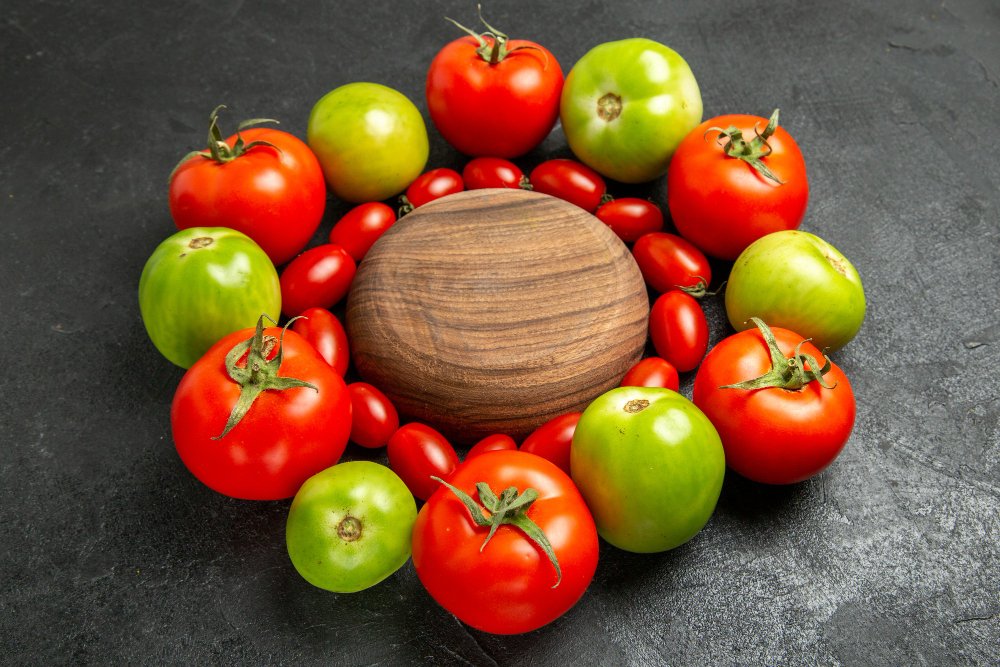Table of Contents
Introduction:
Incorporating a variety of vegetables into your diet is essential for maintaining a balanced and healthy life. Nutrition mixed vegetables not only enhance the flavors and textures of your dishes but also give a wealth of essential vitamins, minerals, and antioxidants that are vital for overall health. In this composition, we will explore ten succulent nutrition mixed vegetables that can amp your reactions, ameliorate your health, and satisfy your taste buds.
The significance of Nutrition Mixed Vegetables
The term nutrition mixed vegetables refers to a various combination of vegetables that work together to produce a nutrient-thick dish. Eating a variety of vegetables is pivotal for carrying a wide range of nutrients. These include
- Vitamins and Minerals: Different vegetables give different vitamins and minerals essential for fleshly functions. For example, lush flora like spinach is rich in iron, while carrots are high in beta-carotene.
- Salutary Fiber: Most vegetables are high in salutary fiber, which is pivotal for maintaining digestive health, regulating blood sugar situations, and aiding in weight operation.
- Antioxidants: numerous vegetables contain antioxidants, which help combat oxidative stress in the body, reducing the threat of habitual conditions like heart disease and cancer.
- Hydration Vegetables: have high water content, contributing to hydration and overall heartiness.
By incorporating nutrition mixed vegetables into your diet, you can reap these benefits and enjoy succulent, scrumptious refections. Then’s a deeper dive into ten pleasurable vegetables you can mix and match to produce amping dishes.

1. Colorful Bell Peppers
Bell peppers are among the most vibrant and protein-rich mixed vegetables. They come in a variety of colors, including red, heroic, green, and indeed grandiloquent, each with its own unique flavor profile.
- Nutritive Benefits: Bell peppers are an excellent source of vitamins A and C. They contain antioxidants that may help reduce inflammation and support heart health.
- Stir-Culinary Uses: These brickle vegetables can be eaten raw in salads, grilled, or roasted as a side dish. For a scrumptious stir-shindig, toss sliced bell peppers with broccoli, carrots, and your choice of protein, adding soy sauce for an umami boost.
2. Broccoli
Broccoli is a nutrient hustler and one of the most popular nutrition mixed vegetables.
- Nutritive Benefits: High in vitamins K and C, fiber, and colorful antioxidants, broccoli supports vulnerable health and promotes strong bones.
- Culinary Uses: This protean vegetable can be fumed, sauteed, or roasted. For a quick side dish, brume broccoli and dapple it with olive oil and bomb juice. Alternately, add it to mists and salvers for added texture and nutrition.
3. Spinach
Spinach is a lush herbage that’s frequently hailed as a superfood due to its emotional nutritive profile.
- Nutritive Benefits: It’s rich in iron, calcium, and vitamins A and C. Spinach is also low in calories, making it an excellent choice for those looking to manage their weight.
- Culinary Uses: Spinach can be enjoyed raw in salads or smoothies, or cooked in colorful dishes. Try adding sautéed spinach to an omelet or mixing it into pasta for a succulent and nutritional boost.
4. Carrots
Carrots are n’t only visually appealing with their bright orange color but also give multitudinous health benefits.
- Nutritive Benefits: Rich in beta-carotene, which the body converts to vitamin A, carrots promote eye health and vulnerable function. They also give fiber, which is essential for digestive health.
- Culinary Uses: Carrots can be enjoyed raw, roasted, or cooked in mists and stews. Try grating them into a salad for added crunch or riding them with a mizzle of honey for a sweet side dish.

5. Zucchini
Zucchini is a protean summer squash that’s perfect for incorporating into nutrition mixed vegetables dishes.
- Nutritive Benefits: Low in calories and high in vitamins A and C, zucchini also provides potassium, which is essential for heart health and muscle function.
- Culinary Uses: Zucchini can be spiralized into polls, grilled, or roasted. For a healthy twist, cover traditional pasta with zucchini polls in your favorite spaghetti dish, outgunned with marinara sauce and sautéed nutrition mixed vegetables.
6. Sweet Potatoes
Sweet potatoes are a deliciously sweet root vegetable that packs a nutritional punch.
- Nutritional Benefits: They are high in vitamins A and C, fiber, and potassium. Their natural sweetness makes them a favorite among both children and adults.
- Culinary Uses: Sweet potatoes can be baked, mashed, or roasted. For a healthy side dish, roast sweet potato wedges with a sprinkle of cinnamon and a drizzle of olive oil. They can also be blended into smoothies for added creaminess and nutrition.
7. Green Beans
Green beans are a classic addition to any meal and a great way to incorporate nutrition mixed vegetables into your diet.
- Nutritional Benefits: They are rich in vitamins A, C, and K, as well as fiber and folate. Green beans also provide a satisfying crunch.
- Culinary Uses: Green beans can be steamed, sauteed, or roasted. For a quick side dish, saute green beans with garlic and almonds for added flavor and crunch. They can also be added to casseroles or salads for extra texture.

8. Cauliflower
cauliflower has gained popularity as a versatile vegetable that can be used in a variety of dishes.
- Nutritional Benefits: Low in calories and high in vitamins C and K, cauliflower is also a great source of fiber. It contains compounds that may help reduce the risk of cancer.
- Culinary Uses: Cauliflower can be roasted, steamed, or even riced to serve as a low-carb alternative to grains. For a delicious side dish, roast cauliflower florets with olive oil and spices, or blend steamed cauliflower into creamy soups.
9. Tomatoes
Tomatoes are not only flavorful but also a staple in many dishes around the world.
- Nutritional Benefits: Rich in vitamins C and K, potassium, and lycopene, tomatoes have antioxidant properties that may help lower the risk of chronic diseases.
- Culinary Uses: Fresh tomatoes can be added to salads, sauces, and soups. For a refreshing summer salad, combine diced tomatoes with cucumbers, red onion, and a simple vinaigrette. Roasted tomatoes also make a flavorful addition to pasta dishes and casseroles.

10. Peas
Peas are small but mighty, offering a range of nutritional benefits in every tiny pod.
- Nutritional Benefits: Peas are packed with protein, fiber, and vitamins A, C, and K. They are also low in calories, making them a great addition to any meal.
- Culinary Uses: Peas can be added to soups, stir fries, and salads. For a delightful side dish, saute peas with onions and garlic or blend them into a creamy soup with mint for a refreshing twist.
How to Incorporate Nutrition Mixed Vegetables into Your Meals
Incorporating nutrition mixed vegetables into your meals can be easy and enjoyable. Here are some creative ways to add more of these nutritious foods to your diet:
1. Make Stir-Fries
Stir-frying is a quick and delicious way to cook nutrition mixed vegetables. Simply toss your favorite vegetables in a hot pan with some oil, garlic, and soy sauce. Add your choice of protein, such as chicken, shrimp, or tofu, for a complete meal. Stir-frying helps retain the nutrients and vibrant colors of the vegetables.
2. Create Colorful Salads
Salads are a fantastic way to showcase nutrition mixed vegetables. Combine a variety of vegetables, such as leafy greens, bell peppers, cucumbers, and tomatoes, for a vibrant salad. Add a protein source like grilled chicken, beans, or nuts to create a well-rounded meal. Drizzle with a homemade vinaigrette for extra flavor.

3. Use in Soups and Stews
Adding chopped nutrition mixed vegetables to soups and stews is an excellent way to boost their nutritional value. Experiment with different combinations of vegetables to create hearty and flavorful dishes. For example, a vegetable soup can include carrots, celery, tomatoes, and spinach, simmered in a flavorful broth.
4. Roast for Flavor
Roasting brings out the natural sweetness of nutrition mixed vegetables and enhances their flavors. Toss your favorite vegetables, such as carrots, zucchini, and bell peppers, in olive oil and season with herbs and spices. Roast in the oven until tender and caramelized for a delicious side dish.
5. Blend into Smoothies
Incorporate leafy greens like spinach or kale into your morning smoothies for an extra boost of nutrients. Pair them with fruits like bananas, berries, or mangoes to mask the taste while still enjoying the benefits of nutrition mixed vegetables. Adding a scoop of protein powder or yogurt can also enhance the smoothie’s nutritional profile.
6. Experiment with Different Cuisines
Explore various cuisines to find new and exciting ways to use nutrition mixed vegetables. Try Asian-inspired dishes like stir-fried vegetables with tofu, Mediterranean salads with chickpeas and feta, or Mexican salsas with tomatoes, onions, and cilantro. Each cuisine offers unique flavors and preparation methods to highlight your favorite vegetables.
Tips for Storing and Preparing Nutrition Mixed Vegetables
To make the most of your nutrition mixed vegetables, proper storage and preparation are key. Here are some helpful tips:
- Store Properly: Keep fresh vegetables in the refrigerator to maintain their freshness. Use perforated plastic bags or produce drawers to allow air circulation. Root vegetables, such as carrots and sweet potatoes, can be stored in a cool, dark place.
- Wash Before Use: Always wash vegetables before consuming them to remove dirt and pesticides. A gentle scrub under running water is usually sufficient.
- Chop and Prep Ahead: Spend some time each week prepping your vegetables by washing, chopping, and storing them in the refrigerator. This makes it easier to incorporate nutrition mixed vegetables into your meals throughout the week.
- Cook with Minimal Water: When cooking vegetables, use minimal water to retain their nutrients. Steaming or roasting are excellent methods that preserve the flavors and textures of the vegetables.
- Experiment with Seasonings: Don’t be afraid to experiment with herbs, spices, and seasonings to enhance the flavors of your nutrition mixed vegetables. Garlic, lemon juice, balsamic vinegar, and fresh herbs can all elevate your dishes.
Frequently Asked Questions:
What are nutrition mixed vegetables?
Nutrition mixed vegetables are a combination of various vegetables that provide a wide range of vitamins, minerals, and antioxidants. They often include colorful options like carrots, bell peppers, broccoli, and spinach, ensuring a diverse nutrient profile.
Why are mixed vegetables important for a healthy diet?
Mixed vegetables are crucial for a healthy diet as they supply essential nutrients, improve digestion, support immune function, and reduce the risk of chronic diseases. Their varied colors indicate different nutrients, making them a vital part of a balanced diet.
How do I prepare mixed vegetables to retain their nutrients?
To retain the nutrients in mixed vegetables, consider steaming or sautéing them lightly instead of boiling, which can lead to nutrient loss. Cooking them for a short time and using minimal water can help preserve their nutritional value.
Постигнете перфектния комбинация между стил и ефективност с интегрирани фурни от “Вето”! Всеки аспект във вашата кухня изисква специално внимание, и с помощта на фурните за вграждане от “Вето”, вие не просто купувате уред – вие инвестирате в мечтата си за перфектната кухня.
Комбинирайки актуален дизайн със последните технологии, фурните ни предоставят високо ниво на удобство и ефективност във всяко ползване.
промоция фурна плот абсорбатор за вграждане